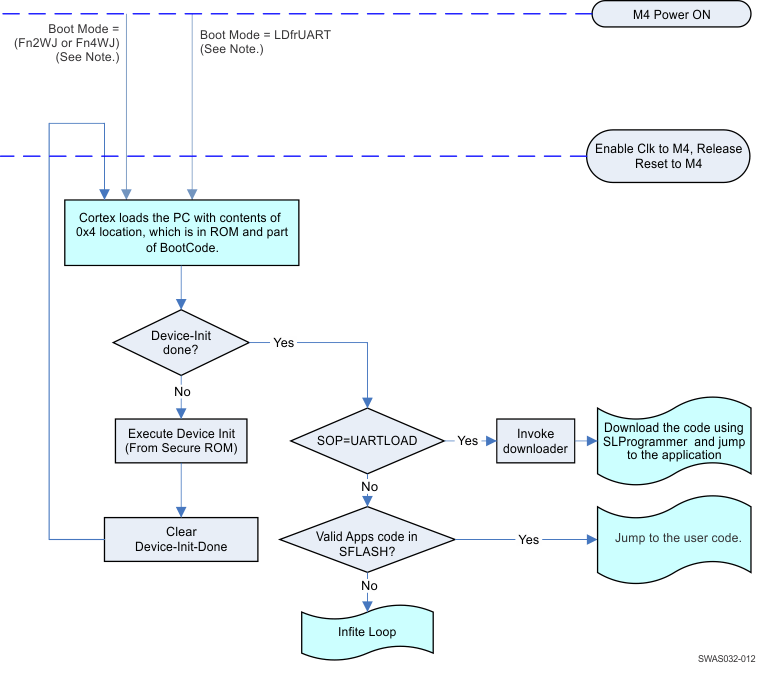ZHCSM61C November 2014 – September 2020 CC3200MOD
PRODUCTION DATA
- 1 特性
- 2 应用
- 3 说明
- 4 Functional Block Diagrams
- 5 Revision History
- 6 Device Comparison
- 7 Terminal Configuration and Functions
-
8 Specifications
- 8.1 Absolute Maximum Ratings
- 8.2 ESD Ratings
- 8.3 Power-On Hours (POH)
- 8.4 Recommended Operating Conditions
- 8.5 Power Consumption Summary
- 8.6 Brownout and Blackout Conditions
- 8.7 WLAN RF Characteristics
- 8.8 Reset Requirement
- 8.9 Thermal Resistance Characteristics for MOB and MON Packages
- 8.10 Timing and Switching Characteristics
- 9 Detailed Description
- 10Applications, Implementation, and Layout
- 11Environmental Requirements and Specifications
- 12Device and Documentation Support
- 13Mechanical, Packaging, and Orderable Information
请参考 PDF 数据表获取器件具体的封装图。
机械数据 (封装 | 引脚)
- MOB|63
散热焊盘机械数据 (封装 | 引脚)
9.9.1 Overview
The boot process of the application processor includes two phases. The first phase consists of unrestricted access to all register space and configuration of the specific device setting. In the second phase, the application processor executes user-specific code.
Figure 9-3 shows the bootloader flow chart.

Note: For definitions of the SoP
mode functional configurations, see Table 9-6.
Figure 9-3 Bootloader Flow Chart